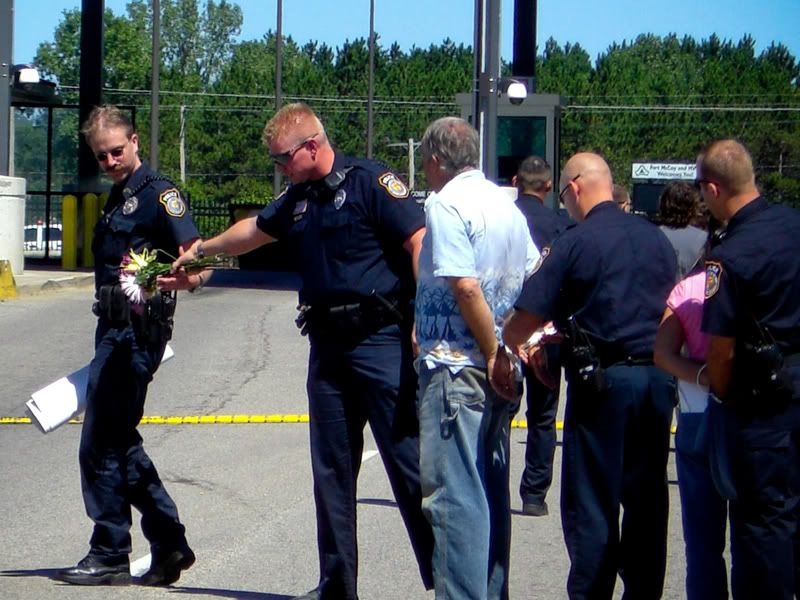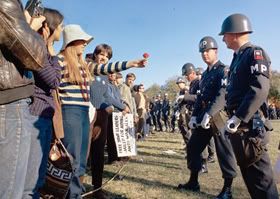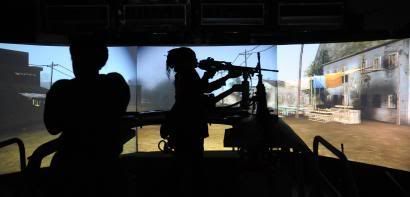I had promised to report on the National Assembly to End the Iraq War and Occupation held June 28-29 in Cleveland, but delayed it to await an official summary of the actions taken there. Unless you were in the room almost all of the time for the debate and votes, it was impossible to know exactly what decisions the 400-plus participants made. And I confess to spending a good chunk of time “networking” and kibitzing in the halls.
Now the organizers have produced their summary and evaluation, which you can read it its entirety here.
The Assembly urged united and massive mobilizations on both coasts in the spring to end the war, while also endorsing demonstrations at the Republican (Sept. 1-4) and Democratic (Aug. 25-28) conventions, local actions on October 11 — the date Congress passed the resolution authorizing the Iraq war — and proposing Dec. 9-14 as dates for local actions across the country demanding the immediate withdrawal of troops from Iraq and Afghanistan.
The group also voted almost unanmously to endorse local Iraq Moratorium actions on the Third Friday of every month, although that is not specifically mentioned in the organizers’ report. That’s disappointing to me, as part of the group who worked to make that part of the action agenda passed by the participants. But in the grand scheme of things, as one of my compatriots said, “This is just one document, produced by some exhausted folks in the aftermath of a complex event.” The proof, as usual, will be in the pudding.
Organizers believe the Dec. 9-14 actions provide the best potential for uniting the entire movement in the months ahead:
ANSWER and the Troops Out Now Coalition have endorsed them and the hope is that United for Peace and Justice will do the same. The need now is to take these proposed dates to local antiwar coalitions; labor groups, especially U.S. Labor Against the War; veterans and military families organizations: the faith community; Black, Hispanic, Asian, Arab, Muslim and other nationalities, racial and ethnic groups; students; women’s peace organizations; the Iraq Moratorium; and other social forces that can be drawn into antiwar activities. All actions are viewed as springboards for building massive, united, independent and bi-coastal Spring 2009 demonstrations against the war.
In other action, the Assembly:
— Expressed its strong opposition to attacks against Iran, as well as sanctions and other forms of intervention into that country’s internal affairs; registered determination to join other antiwar forces in massive united, protest actions in the event that the U.S. or its proxy, Israel, bombs Iran; and urged that if this occurs an emergency meeting of all the major antiwar forces be called to plan such actions.
— Added Afghanistan to the name of the Assembly because the U.S. is fighting two unjust, illegal and brutal wars simultaneously and both must be opposed. We are now the National Assembly to End the Iraq and Afghanistan Wars and Occupations.
— Voted to integrate the issue of Palestine into the broader antiwar struggle and to challenge U.S. support for the Israeli occupation.
It’s hard to judge the Assembly’s real impact, but just getting activists from a wide variety of groups and causes to spend the weekend in the same room, operating in a civil fashion and emphasizing their unifying beliefs rather than their differences, is an accomplishment in itself.
As one of my Wisconsin friends put it, “The hollering was at a minimum, the crowd lively, (if a bit unfocused), the tone was upbeat.”
The Assembly adopted the Big Tent philosophy, and was happy to keep enlarging the tent to make room for everyone. Oppose the war in Afghanistan, too? Come on in. Palestine’s your main focus? No problem, there’s plenty of room.
While that may have built a broader coalition, it seems like that message may be a harder sell when it comes to trying to mobilize massive numbers of regular folks to act against the war — and that must be the ultimate objective. With a single focus on Iraq, which two-thirds of Americans think was a mistake, it has still been hard to get people to translate their feelings into action. Adding more issues to the pot will not make it easier, but more difficult.
The group’s five points of unity are: (1) “Out Now!” as the movement’s unifying demand, (2) mass action as the central strategy, (3) unity of the movement, (4) democratic decision making, and (5) independence from all political parties. Steps were taken to make the Assembly an ongoing organization, “a network with its mission intact and continuing: to be a catalyst and unifier, striving always to unite the movement in the streets.”
There are certain to be some bumps in the road. The one-person, one-vote rule worked in Cleveland, but that meant that Ohio participants had 140 votes while Texas had one. Twenty-five states had no representatives at all. While geography may not be important — this is an antiwar coalition, not the Electoral College — it also means that some of the bigger organizations were under-represented. At some point that may become an issue.
But, big picture, was it worth doing? Was it energizing? Am I glad I went?
Yes, yes, and yes.
 Friday marks the 12th month, the end of a year, for the Iraq Moratorium.
Friday marks the 12th month, the end of a year, for the Iraq Moratorium. 




 Kelly, (left) a high school and community college teacher, has repeatedly risked her life and her freedom as an advocate for non-violence. She is now affiliated with
Kelly, (left) a high school and community college teacher, has repeatedly risked her life and her freedom as an advocate for non-violence. She is now affiliated with